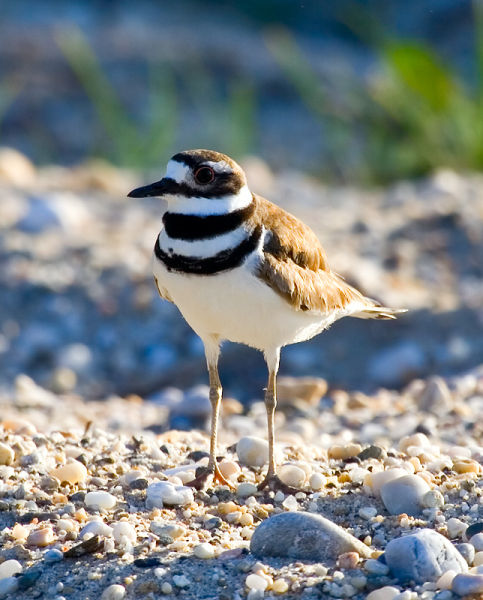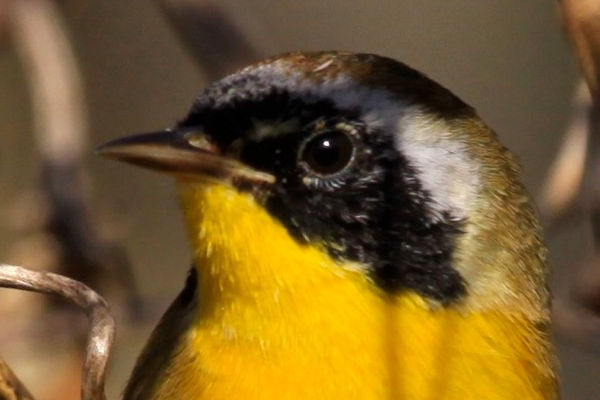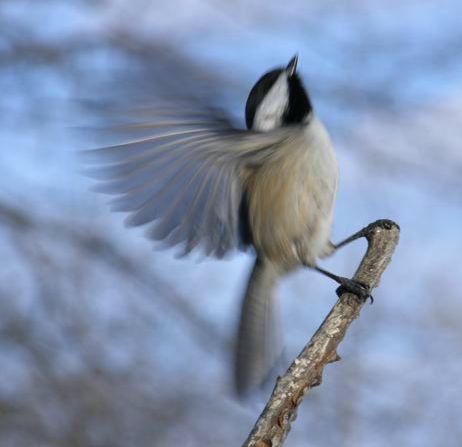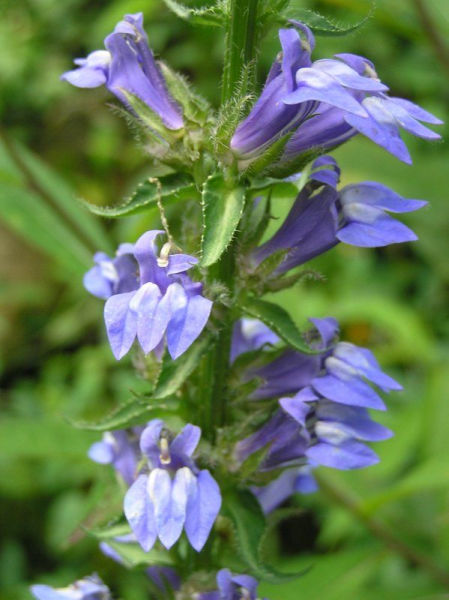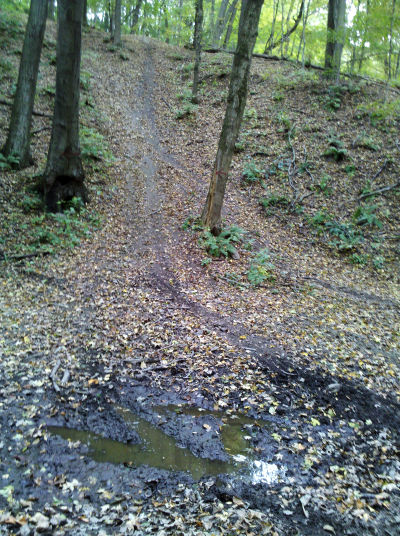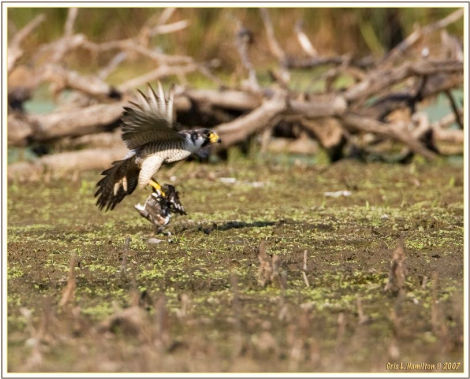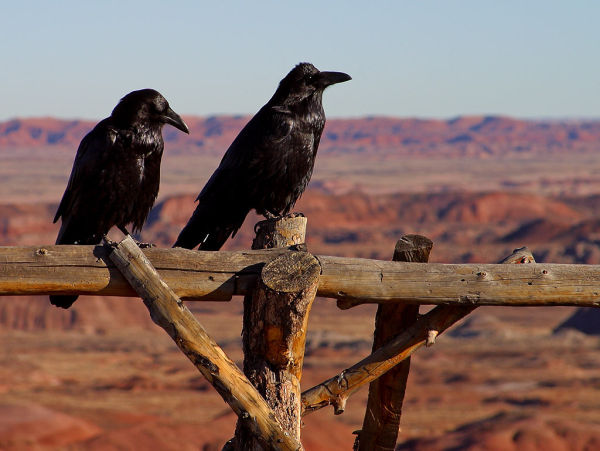
When I found this photo the other day it brought back memories. Here are a couple of ravens at the overlook at the Petrified Forest. What are they doing? I’ll bet they’re waiting for handouts.
Back in the early part of this century I visited Death Valley and made a point of stopping at the overlook on the eastern side. In the parking lot I found a pair of ravens obviously waiting for visitors. As I parked the car they sized me up. Likely food source? “No. Leave her alone.”
Soon a family mini-van arrived and the kids piled out with snack food. Jackpot!
One raven chose the six-year-old girl as a likely pushover. He walked to within 10 feet and faced her, watching every move as she brought potato chips to her mouth. I could hear his thoughts shouting, “Throw one to me!”
Something about her eye contact said “OK, I’ll give you one” and the raven stepped forward as the girl handed him a potato chip. His beak was as high as her hand.
After several chips Mom broke up this conclave. No problem. Mission accomplished.
Eastern ravens aren’t as bold around people but they’re still tricksters. On Sunday I saw two ravens at Keystone State Park in Westmoreland County. One by one they flew out of sight beyond the hill, then appeared above the trees carrying a pinkish-white teardrop-shaped blob. A small plucked chicken? I couldn’t tell what it was but someone would be puzzled to find it missing.
The ravens made my day. I always enjoy watching the Wise Guys.
(photo from Wikimedia Commons; Click on the photo to see the original.)


